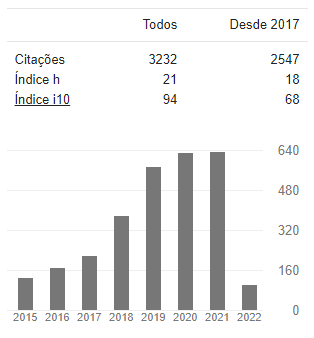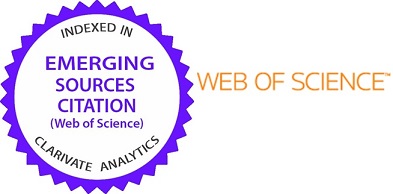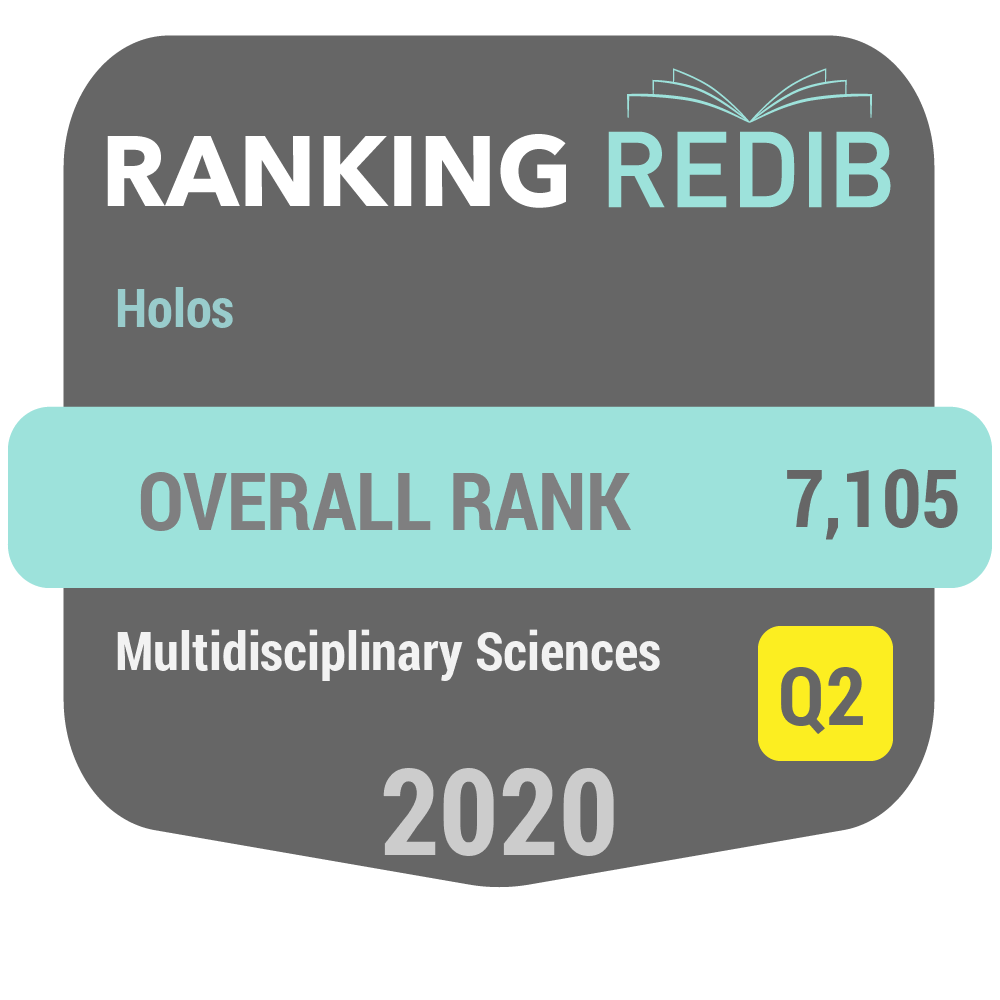DIVERSIDADE E COMPORTAMENTO DE ABELHAS NA FLORADA DE Antigonon leptopus HOOK. & ARN. (POLYGONACEAE) EM REGIÃO SEMIÁRIDA
DOI:
https://doi.org/10.15628/holos.2021.10760Palavras-chave:
flora apícola, abelhas-sem-ferrão, abelhas silvestres, melitofilia, polinização.Resumo
Antigonon leptopus Hook. & Arn. (Polygonaceae), conhecida popularmente como amor-agarradinho, é uma planta ornamental muito utilizada como fonte de recurso alimentar para abelhas melíferas e sem-ferrão, no entanto, são escassas a informações sobre a diversidade de abelhas que utilizam seus recursos florais, principalmente no Brasil. O objetivo deste estudo foi identificar a diversidade e o comportamento das abelhas visitantes florais de A. leptopus, investigando a influência do microclima na atividade de visitas e a eficiência das abelhas na polinização da planta. A coleta de dados ocorreu no pico de floração da espécie, em uma área de semiárido (Petrolina, Pernambuco, Brasil). Foram registradas quatorze espécies de abelhas, a maioria coletava néctar e polinizava as flores a partir do comportamento intrafloral. Apis mellifera, Centris trigonoides e Trigona spinipes foram as espécies mais frequentes, respectivamente. As visitas florais foram concentradas no período matutino, onde registrou-se menores valores de temperatura e maior umidade relativa do ar. As abelhas foram muito eficientes na polinização das flores (71,08%), em comparação à autopolinização espontânea (2,86%). A. leptopus possui flores melitófilas, atraindo uma diversidade considerável de espécies, sendo caracterizada como uma planta com potencial apícola, meliponícola e para o fornecimento de recursos às abelhas silvestres.
Downloads
Referências
Abou-Shaara, H. F. (2014). The foraging behaviour of honey bees, Apis mellifera: a review. Veterinarni Medicina, 59(1), 1-10. DOI: https://doi.org/10.17221/7240-VETMED
Adjaloo, M. K., Ankomah, A. A., Yeboah-Gyan, K., & Dzomeku, B. M. (2015). Nectar production dynamics in two melliferous plant species. Genetics and Plant Physiology, 5(2), 145-161.
Aguiar, C. M., Zanella, F. C., Martins, C. F., & Carvalho, C. A. D. (2003). Plantas visitadas por Centris spp. (Hymenoptera: Apidae) na Caatinga para obtenção de recursos florais. Neotropical Entomology, 32(2), 247-259. DOI: https://doi.org/10.1590/S1519-566X2003000200009
Balasubramani, G., Ramkumar, R., Krishnaveni, N., Pazhanimuthu, A., Natarajan, T., Sowmiya, R., & Perumal, P. (2015). Structural characterization, antioxidant and anticancer properties of gold nanoparticles synthesized from leaf extract (decoction) of Antigonon leptopus Hook. & Arn. Journal of Trace Elements in Medicine and Biology, 30, 83-89. DOI: https://doi.org/10.1016/j.jtemb.2014.11.001
Baum, K. A., Tchakerian, M. D., Thoenes, S. C., & Coulson, R. N. (2008). Africanized honey bees in urban environments: a spatio-temporal analysis. Landscape and Urban Planning, 85(2), 123-132. DOI: https://doi.org/10.1016/j.landurbplan.2007.10.005
Bloch, G., Bar-Shai, N., Cytter, Y., & Green, R. (2017). Time is honey: circadian clocks of bees and flowers and how their interactions may influence ecological communities. Philosophical Transactions of the Royal Society B: Biological Sciences, 372(1734), 20160256. DOI: https://doi.org/10.1098/rstb.2016.0256
Bodenheimer, F. S. (1955). Precis d’écologie animal (1a ed.). Paris: Payot.
Burke, J. M., & DiTommaso, A. (2011). Corallita (Antigonon leptopus): Intentional introduction of a plant with documented invasive capability. Invasive Plant Science and Management, 4(3), 265-273. DOI: https://doi.org/10.1614/IPSM-D-10-00088.1
Campbell, J. W., Irvin, A., Irvin, H., Stanley-Stahr, C., & Ellis, J. D. (2016). Insect visitors to flowering buckwheat, Fagopyrum esculentum (Polygonales: Polygonaceae), in north-central Florida. Florida Entomologist, 99(2), 264-268. DOI: https://doi.org/10.1653/024.099.0216
Carneiro-Neto, T. F. D. S., Oliveira-Rebouças, P. L., Pereira, J. E., Duarte, P. M., Santos, M. H. L. C., da Silva, G. C., & de Siqueira, K. M. M. (2017). Spectrum of pollen stored by Melipona mandacaia (Smith, 1863) (Hymenoptera: Apidae, Meliponini) in an urban arid landscape. Sociobiology, 64(3), 284-291. DOI: https://doi.org/10.13102/sociobiology.v64i3.1257
Corbet, S. A., Fussell, M., Ake, R., Fraser, A., Gunson, C., Savage, A., & Smith, K. (1993). Temperature and the pollinating activity of social bees. Ecological entomology, 18(1), 17-30. DOI: https://doi.org/10.1111/j.1365-2311.1993.tb01075.x
Drumond, P., Ribeiro, M. D. F., Kiill, L., & Santos, R. (2019). Aprendendo a conviver com as abelhas-arapuás em sistemas agrícolas (1a ed.). Rio Branco: Embrapa Acre.
Faegri, K., & Pijl, L. (1979). The principles of pollination ecology (3a ed.). Oxford: Pergamon Press. DOI: https://doi.org/10.1016/B978-0-08-023160-0.50020-7
Freitas, A., de Arruda, V. A. S., de Almeida-Muradian, L. B., & Barth, O. M. (2013). The botanical profiles of dried bee pollen loads collected by Apis mellifera (Linnaeus) in Brazil. Sociobiology, 60(1), 56-64. DOI: https://doi.org/10.13102/sociobiology.v60i1.56-64
Gaglianone, M. C., Rocha, H. H. S., Benevides, C. R., Junqueira, C. N., & Augusto, S. C. (2010). Importância de Centridini (Apidae) na polinização de plantas de interesse agrícola: o maracujá-doce (Passiflora alata Curtis) como estudo de caso na região sudeste do Brasil. Oecologia Australis, 14(1), 152-164. DOI: https://doi.org/10.4257/oeco.2010.1401.08
Garibaldi, L. A., Steffan-Dewenter, I., Winfree, R., Aizen, M. A., Bommarco, R., Cunningham, S. A., ... & Bartomeus, I. (2013). Wild pollinators enhance fruit set of crops regardless of honey bee abundance. science, 339(6127), 1608-1611. DOI: https://doi.org/10.1126/science.1230200
Gonçalves, L., Silva, C. I., & Buschini, M. L. T. (2012). Collection of pollen grains by Centris (Hemisiella) tarsata Smith (Apidae: Centridini): is C. tarsata an oligolectic or polylectic species. Zoological Studies, 51(2), 195-203.
Hilário, S. D., Imperatriz-Fonseca, V. L., & Kleinert, A. (2000). Flight activity and colony strength in the stingless bee Melipona bicolor bicolor (Apidae, Meliponinae). Revista brasileira de biologia, 60(2), 299-306. DOI: https://doi.org/10.1590/S0034-71082000000200014
Holzschuh, A., Dudenhöffer, J. H., & Tscharntke, T. (2012). Landscapes with wild bee habitats enhance pollination, fruit set and yield of sweet cherry. Biological Conservation, 153, 101-107. DOI: https://doi.org/10.1016/j.biocon.2012.04.032
Inouye, D. W. (1980). The terminology of floral larceny. Ecology, 61(5), 1251-1253. DOI: https://doi.org/10.2307/1936841
Kennedy, C. M., Lonsdorf, E., Neel, M. C., Williams, N. M., Ricketts, T. H., Winfree, R., ... & Carvalheiro, L. G. (2013). A global quantitative synthesis of local and landscape effects on wild bee pollinators in agroecosystems. Ecology letters, 16(5), 584-599. DOI: https://doi.org/10.1111/ele.12082
Klein, A. M., Steffan–Dewenter, I., & Tscharntke, T. (2003). Fruit set of highland coffee increases with the diversity of pollinating bees. Proceedings of the Royal Society of London. Series B: Biological Sciences, 270(1518), 955-961. DOI: https://doi.org/10.1098/rspb.2002.2306
Kremen, C. (2005). Managing ecosystem services: what do we need to know about their ecology? Ecology letters, 8(5), 468-479. DOI: https://doi.org/10.1111/j.1461-0248.2005.00751.x
Leitão, M. M. V. B. R. (2020). Laboratório de meteorologia: Universidade Federal do Vale do São Francisco. Disponível em:< http://labmet.univasf.edu.br/>. Acesso em: 12 jun. 2020.
Maia, U. M., Jaffe, R., Carvalho, A. T., & Fonseca, V. L. I. (2015). Meliponicultura no Rio Grande do Norte. Brazilian Journal of Veterinary Medicine, 37(4), 327-333.
Matos, E. J. A., Santos, H. C., Silva, E. M. S., & Correia, R. C. (2014). Boas práticas de manejo apícola. Petrolina: Embrapa Semiárido.
Moura, D. C., Pereira, T. M. S., de Farias, G. C., & Leite, J. E. M. (2018). Abelhas e espécies melitófilas da mata ciliar do riacho Salgadeira, município de Alcantil, Paraíba. Revista Verde de Agroecologia e Desenvolvimento Sustentável, 13(3), 392-398. DOI: https://doi.org/10.18378/rvads.v13i3.5788
Nascimento, A. S., de Carvalho, C. A. L., & da Silva Sodré, G. (2015). The pollen spectrum of Apis mellifera honey from Reconcavo of Bahia, Brazil. Journal of Scientific Research and Reports, 426-438. DOI: https://doi.org/10.9734/JSRR/2015/16799
Pigozzo, C. M., & Viana, B. F. (2010). Estrutura da rede de interações entre flores e abelhas em ambiente de caatinga. Oecologia Australis, 14(1), 100-114. DOI: https://doi.org/10.4257/oeco.2010.1401.04
Potts, S. G., Vulliamy, B., Dafni, A., Ne'eman, G., & Willmer, P. (2003). Linking bees and flowers: how do floral communities structure pollinator communities? Ecology, 84(10), 2628-2642. DOI: https://doi.org/10.1890/02-0136
Rajput, K. S. (2015). Comparative study on secondary xylem and formation of successive cambia in stems and roots of Antigonon leptopus Hook. & Arn. (Polygonaceae). Flora-Morphology, Distribution, Functional Ecology of Plants, 217, 131-137. DOI: https://doi.org/10.1016/j.flora.2015.10.004
Raju, A. J. S., Raju, V. K., Victor, P., & Naidu, S. A. (2001). Floral ecology, breeding system and pollination in Antigonon leptopus L. (Polygonaceae). Plant Species Biology, 16(2), 159-164. DOI: https://doi.org/10.1046/j.1442-1984.2001.00060.x
Ribeiro, M. F., & Taura, T. A. (2019). Presence of Plebeia aff. flavocincta nests in urban areas. Sociobiology, 66(1), 66-74. DOI: https://doi.org/10.13102/sociobiology.v66i1.3474
Silva, W. P., & Paz, J. R. L. (2012). Abelhas sem ferrão: muito mais do que uma importância econômica. Natureza on line, 10(3), 146-152.
Tepedino, V. J., Bowlin, W. R., & Griswold, T. L. (2011). Diversity and pollination value of insects visiting the flowers of a rare buckwheat (Eriogonum pelinophilum: Polygonaceae) in disturbed and “natural” areas. Journal of Pollination Ecology, 4(8), 57-67. DOI: https://doi.org/10.26786/1920-7603(2011)9
Vanisree, M., Alexander-Lindo, R. L., DeWitt, D. L., & Nair, M. G. (2008). Functional food components of Antigonon leptopus tea. Food Chemistry, 106(2), 487-492. DOI: https://doi.org/10.1016/j.foodchem.2007.06.013









































